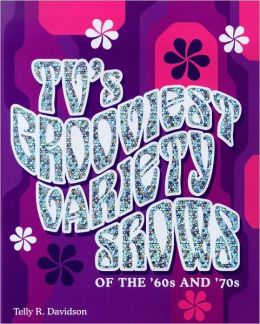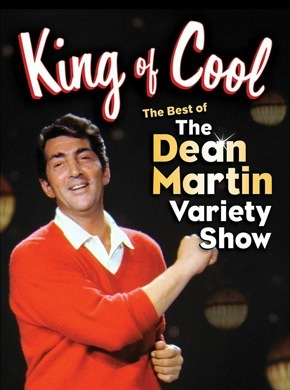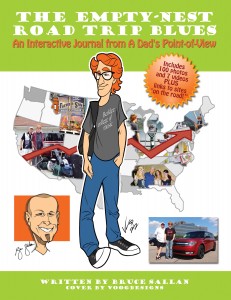By Professor David E. Weber and Bruce Sallan
In each article in the series on the evolution of technology, Bruce and I usually reflect on how hardware — such as landlines to mobile phones, or automobile AM radios to USB ports in your car for digital music playback — has shifted and evolved over several decades. This time, we’d like to reflect on an evolution in “software” — specifically, the disappearance of the television programming form known as the Variety Show.
A Variety Show would be broadcast weekly in a specific time slot. Especially during the early years of television, many aired live. Some appeared on the national networks; others, originating locally, would appear only on local television stations. In either case, the typical variety show normally consisted of a host plus several acts. The acts would be drawn from different arts or entertainment specialties (e.g., music, drama, stand-up comedy, and more). The host would welcome the audience, introduce each of the acts and then bid the audience farewell until next week. In some variety shows, the hosts themselves appeared in some or all segments of the show — in others, none.
Recently, I spent a while investigating the presence of variety shows on TV back in the day. I focused on the ten-year period bracketed by the 1959-1960 and 1969-1970 television seasons (Back then; a “season” of TV mirrored the September-to-June school calendar, with “summer re-runs” preceding the beginning of the next season). I inspected the prime-time schedules of the networks during that decade (In those days, “prime time” meant 7.30-11.00 p.m. and the networks were ABC, CBS and NBC. No multitude of cable stations because no cable television!). I counted no fewer than forty prime-time variety shows. Some lasted one season or less, some lasted years, some keeping the same time slot, others getting programmed into several slots before going off the air for good.
Here are some of those shows. Do you remember any of them?
The Andy Williams Show
The Danny Kaye Show
The Dennis O’Keefe Show
The Edie Adams Show
The George Gobel Show
The Jerry Lewis Show
The Jimmy Dean Show
The Judy Garland Show
The Red Skelton Show
The Roger Miller Show
And that’s just SOME of the variety shows with titles that began with “The” and ended with “Show!” The name in between was the name of the host. How many of those hosts’ names do you recognize? Judy Garland, probably; Jerry Lewis, maybe? But Dennis O’Keefe? He was what once was called an “Irish tenor” and got his start on television as a straight man for comedy icon Jack Benny. George Gobel? Originally a country-western singer, then a comedian, and eventually a daytime game show panelist, Gobel’s variety show, heavily oriented to comedy, actually ran for six seasons.
Most of the variety shows did have a tendency to lean in a particular direction in the acts. Gobel’s show, mostly comedy; Williams’s show, most pop music with an occasional rough-edge-sanded-off rock act included “for the kids”; Skelton’s show, mostly sketch comedy, with Skelton himself appearing in most of the sketches, each week performing several of the numerous slapstick characters viewers had come to associate with him.
Out of curiosity, I checked the 1999-2000 television schedule. I did not see one variety show listed.
Growing up, I enjoyed variety shows for the most part. Some seemed kind of sappy, like the weekly mid-1960s show hosted by the King family. Others, like Hollywood Palace, seemed to cater to adults (it aired quite late at night), not families and definitely not kids. But when watching most variety shows, if one singer or comedian bored me, I just waited a few minutes and, sure enough, the next act would often capture my attention and thoroughly entertain me.
The Carol Burnett Show, with its steady cast of Burnett, Tim Conway, Harvey Korman and a couple of others, ran for years starting in the early 1970s. But who remembers The Entertainers, a show Burnett hosted in the mid-1960s? Less comedy, but with charismatic regulars, such as Caterina Valente, singing upbeat numbers. A viewer tuning in Sing Along With Mitch could literally sing along with the regulars (a chorus of a couple of dozen middle-aged fellows): The words to a few of the songs performed on any broadcast would scroll across the screen. Those songs were usually old favorites (e.g., “I’m Looking Over a Four-Leaf Clover”) that today, in the 21st century, may be unknown. The host, Mitch Miller, an accomplished orchestra conductor and music business executive distinguished by his unique (at the time) moustache and goatee, accordion-ed his arms side to side in time to the music, his stiff and rhythmic arm motions often mocked.
In the late 1960s, variety shows acquired some edge. The most famous of them, The Smothers Brother Comedy Hour, airing at 9.00 p.m. Sundays, fought a continual battle with network (CBS) censors, who during the show’s run canceled several segments, and at least once, an entire broadcast. Folksinger Pete Singer appeared as a guest on one broadcast. With the Vietnam War at its peak, Seeger intended to sing an anti-war song called “Waist Deep in the Big Muddy” when he appeared on the Smothers show. The censors required that technicians bleep out the lyrics. My schoolmates and I never missed the Smothers Brothers. The spirit of the show was delightfully dark; and in conversation with one another on Monday mornings we relived the highlights of the previous night’s most outrageous moments.
My other never-miss-it variety show was The Ed Sullivan Show — what Michael Jordan is to basketball, the Sullivan show was to variety shows. On his stage, the biggest names in the English-language theater performed scenes from the classiest plays on Broadway, with hardest to get tickets …no comedians were as funny as those whom Ed brought in … no show had as many exotic vaudeville acts (magicians, animal acts, ventriloquists), many of them European, as the Sullivan show. Sullivan himself had a famous deadpan, monotone delivery of his comments between acts. He once said that being nothing more than a completely average person meant he didn’t intimidate our outshine anyone, and that, he explained, was his secret to being an enduring figure on television and the perfect host for a variety show.
Sullivan was “appointment television” for families throughout the United States. Not only did he procure outstanding acts, political figures and celebrities in the worlds of sports, journalism and film sat in the audience. Ed would routinely greet them from the stage and invite the camera to focus on them. Even during the years when my parents and I remained at odds week in and week out, walking on eggshells around one another for days at a stretch, we would assemble in front of the family TV at 8.00 p.m. Sundays and watch Ed’s show together for the next hour.
I personally associate Ed Sullivan with firsts: It was on Ed’s show that I for the first time saw George Carlin, Richard Pryor and other entertainers who later became iconic. But Ed’s biggest, most famous first for the entire country was the night in early 1964 when The Beatles sang “I Saw Her Standing There” and two or three other songs. The Beatles had turned Britain upside down but had not yet caught on here in the ‘States…until they appeared on The Ed Sullivan Show and began their conquest of North America.
What happened to variety shows? My guess is, first, cable television happened. If you liked comedy in the 1980s, for example, you didn’t need to watch a variety show in the hopes that you might catch a good comedian’s act on the show. Instead, you tuned in Comedy Central, which originally broadcast short segments of stand-up comics. If you wanted music, you chose MTV, VH-1, CMT and other stations. If you wanted little bit of comedy in between your musical numbers, toggle between Comedy Central and a music station.
Then the Internet happened. You could trawl the Internet to find whatever entertainment suited you. You could Google your way to video of your favorite singers, comics, and dancers. Indeed, the best “variety show” out there now is YouTube. In the space of several minutes, you can watch a clip from a ballet, a scene from a Broadway show, a rock act, a comedy set and maybe an inebriated dog crashing into walls. With YouTube, I can in effect program my own variety show. You want to click through a series of video clips of old television shows, or vintage performances of songs by a composer you like, and mix in a scene or two from a musical? YouTube to the rescue!
Thank you, Professor Weber. As always, you amaze me with your memory. I still sort of consider you my back-up hard drive since you remember things I told you — that I’ve forgotten — and often in more detail than even when it comes back to me. I am grateful for that special role you play in my life.
In this case, you’ve done such an outstanding job of covering the topic. I simply want to add some reflections – old and new – to the column. First, what I feel most people forget or never experienced, depending on their age, was how Variety Shows were the main opportunity to see rising stars in just about every form of entertainment. Comedians got their breaks on The Ed Sullivan Show, along with so many of those you already mentioned
There’s a famous story – the details of which of course I don’t remember – of how the Jewish comedian Jackie Mason somehow got on the wrong side of Ed Sullivan and was banned from his show. His career ended up in purgatory for literally decades due to that mishap. I remember going to see Jackie Mason when his career was resurrected in the 1980’s with my then girlfriend, a non-Jew (Chinese, to boot). Mason was known for his Jewish comedy – heck, he was once a rabbi – and his liberal use of Yiddish.
I got tickets and took my parents and said girlfriend. He played in a relatively small venue in Hollywood. I was literally peeing in my pants throughout his show as much due to his perfect comedic timing and perfect mimicry of many Jewish traits as I was by my clueless girlfriend wondering what everyone was laughing at.
My favorite entertainer, Elvis Presley, got his big break in Variety, first appearing I believe, on The Steve Allen Show (No, I think he was first on Uncle Miltie’s show, The Milton Berle Show). Elvis really hated the “joke” that Steve Allen chose for his performance – who can blame him. Later, when he infamously appeared on Ed Sullivan, they shot him from the waste up fearful his gyrations would offend the sensibilities of the fifties audiences. How quaint!
Television was a communal event in those days because most families, if they even had a TV set, had their one and only one in the family or living room. So, when I wanted to watch my cartoons or the favorite shows of my youth, I had to figuratively wait in line. Sunday was and still is the biggest television watching night of the week and a huge number of families would congregate around the set for The Ed Sullivan Show.
I couldn’t find a clip of The Rat Pack on a Variety Show but check out this short performance with a very-young Johnny Carson!
While my memory is sketchy, I remember enduring Jack Benny, the famous pop singers of the day like Sinatra, Dean, and Sammy. Watching performers like Ethel Merman was pretty much like nails on a blackboard for me. The occasional Opera performance or Broadway show instantly induced sleep. I stuck around for the Rock ‘N’ Roll. Since those years, I’ve actually grown to love and appreciate just about every one of those artists I disdained in my youth!
I remember, like just about everyone at the time, patiently waiting for The Beatles to appear when they first came on The Ed Sullivan Show. I also remember how scandalous my parents though their “long” hair was. Looking back at them now, it’s truly shocking how such relatively short hair could create such a stir.
As a product of the sixties, I saw many of my AM radio favorites for the first time on The Ed Sullivan Show and other Variety Shows. I remember loving The Mamas and The Papas and also The Turtles. I also remember a young Barbra Streisand, who I didn’t particularly appreciate but who induced oohs and awws from my parents.
By the time The Smother Brothers Comedy Hour came along, I was well into my teen years and their show’s story of fighting the CBS censors was big news in those days. They looked and acted so straight and preppy that it’s hard to believe how cutting edge they were with the humor they chose to do and the acts they brought onto their show. I must say that theirs was my favorite Variety Show, hands down.
How many of these stars of the era do you recognize humming the Smothers Brothers theme song?
Jumping ahead to today, I realize that how my boys consume “entertainment” is so significantly different. Both were coming of age well past the time that even MTV was a force. By the time they were interested in music, MTV no longer was a breakout cable station playing exclusively music videos.
So, my boy’s opportunities to find the music and stars of their generation extended to the Internet, YouTube, and of course the old stand-by, friends. The communal experience that Professor Weber and I grew up with was no more. Yes, we’d watch movies together and the occasional television series, but “Live” Variety Shows, in which each family member would have a favorite coming up, is simply no longer part of the family dynamic.
I wish it still were…
How about skipping that $5 Starbucks latte and splurging $2.99 (for the Kindle on Amazon) or $2.79 for the PDF of my new e-book? Enjoy my own informercial for it! This e-book is really a virtual journey. It’s filled with 100 photos, 7 original videos, and links to many of the stops on the trip. Click on the book cover image below to find your purchase options:




